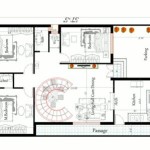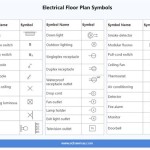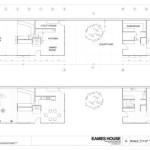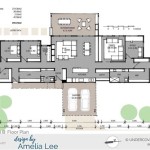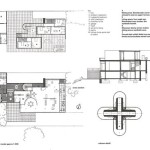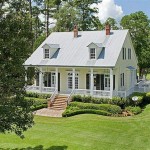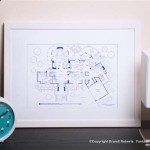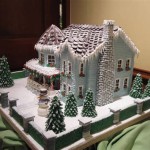Pole Barn House Floor Plans: A Comprehensive Guide
Pole barn homes, also known as post-frame homes, have gained increasing popularity due to their affordability, design flexibility, and relatively quick construction time. These structures utilize pressure-treated wood posts buried directly in the ground or anchored to a concrete foundation, supporting the roof and walls. This building method eliminates the need for a traditional foundation, significantly reducing construction costs and time. Planning the floor plan is crucial for maximizing space and functionality in a pole barn home. This article will explore various aspects of pole barn house floor plans, offering insights into design considerations, popular layouts, and potential cost factors.
Key Considerations for Pole Barn House Floor Plans
Before delving into specific floor plans, it's essential to understand the key elements that influence the design process. These considerations help ensure the final layout is both functional and aesthetically pleasing.
* Lifestyle Needs: Defining the needs of the occupants is paramount. Consider the number of bedrooms, bathrooms, and common areas required. Hobbies and lifestyle choices will also influence the need for specialized spaces like workshops, studios, or home offices. * Site Analysis: Evaluating the building site is essential. Factors like topography, sun exposure, and prevailing winds will influence the placement and orientation of the house. * Budgetary Constraints: Establishing a realistic budget is critical. Floor plan complexity, size, and finishes significantly impact overall costs. Working within a predefined budget helps ensure the project remains financially feasible. * Building Codes and Regulations: Local building codes and zoning regulations must be considered during the design process. These regulations often dictate setback requirements, maximum building heights, and other critical factors. * Energy Efficiency: Incorporating energy-efficient design principles can result in long-term cost savings. Proper insulation, window placement, and airtight construction are essential for maximizing energy efficiency.
Popular Pole Barn House Floor Plans
Several popular floor plan layouts cater to various needs and preferences. Understanding these options can provide a starting point for designing a custom floor plan.
* Open Concept Floor Plans: These designs prioritize open living spaces, combining the kitchen, dining, and living areas into one large space. Open concept layouts promote a sense of spaciousness and are ideal for entertaining. * Ranch Style Floor Plans: Single-story ranch layouts are a popular choice for their accessibility and ease of maintenance. These plans typically feature all living spaces on one level, eliminating the need for stairs. * Two-Story Floor Plans: Two-story designs maximize vertical space, offering more square footage within a smaller footprint. These plans often separate private areas like bedrooms from public areas on the lower level. * Multi-Family Floor Plans: Pole barn structures can also accommodate multiple families, with separate living units within the same structure. These designs are increasingly popular for multi-generational living or rental income potential.
Incorporating Special Features into Your Design
Beyond the basic layout, incorporating specialized spaces can enhance the functionality and value of a pole barn home. These features can be customized to meet the unique needs of the occupants.
* Wraparound Porches: Expanding the living space outwards with a wraparound porch provides a comfortable outdoor area for relaxation and entertaining. * Loft Spaces: Utilizing the high ceilings inherent in pole barn construction allows for the creation of loft spaces, providing additional storage or living areas. Furthermore, lofts are sometimes constructed with interior balconies that overlook open plan living areas. * Workshops and Garages: Integrating a workshop or garage into the floor plan caters to those with hobbies or storage needs. Direct access from the main living area can enhance convenience.
Cost Factors Influencing Pole Barn House Floor Plans
Understanding the factors that influence the cost of a pole barn home is crucial for effective budget management. Careful planning and material selection can significantly impact the final cost.
* Size and Complexity: Larger and more complex floor plans naturally require more materials and labor, leading to higher costs. * Foundation Type: The type of foundation chosen, whether a concrete slab or a pier and beam foundation, will impact the overall cost. * Exterior Finishes: The choice of exterior siding, roofing, and windows significantly affects the overall aesthetic and budget. * Interior Finishes: Interior finishes such as flooring, cabinetry, and countertops can range widely in price, impacting the final cost. * Labor Costs: Labor costs can vary depending on location and the complexity of the project.
Working with a Professional Designer
Collaborating with a qualified designer or architect experienced in pole barn homes is highly recommended. Their expertise can ensure the final floor plan meets both aesthetic and functional requirements while adhering to building codes and regulations.
* Design Expertise: A professional designer can provide valuable insights into space planning, optimizing layout efficiency, and maximizing natural light. * Code Compliance: Ensuring the design meets all local building codes and regulations is essential for obtaining necessary permits and approvals. * Material Selection: A designer can assist in selecting appropriate and cost-effective materials for both the exterior and interior finishes. * Construction Documentation: Detailed construction drawings and specifications are essential for accurate bidding and construction.
Adaptability and Future Expansion
One of the key advantages of pole barn construction is its inherent adaptability. Future expansion possibilities can be incorporated into the initial design, allowing for flexibility as needs change over time.
* Modular Design: Designing a pole barn home with a modular layout allows for easy expansion by adding additional modules as needed. * Unfinished Spaces: Leaving certain areas unfinished during initial construction offers the option to finish them later as needs and budget allow. * Utility Planning: Planning for future utility needs, such as plumbing and electrical connections, can simplify future expansions.

35 X50 Barndominium Floor Plans House Pole Barn

Images Barn Homes Floor Plans Pole House Barndominium

Pole Barn Home Plans Design Cad Pro

Pole Barn House Plans And S Ohio Barndominium Floor Metal Building

Stock Floor Plan Barndominium Branch Versions Plans

Find A Home Modular Plans Pole Barn House Barndominium Floor

Residential Pole Buildings Post Frame Barn Homes Lester

Barn House Designs With Open Floor Plans Houseplans Blog Com

Barndominium Floor Plans To Match Every Homeowner S Style Archute

Pole Barn Homes 101 How To Build Diy Or With Contractor

